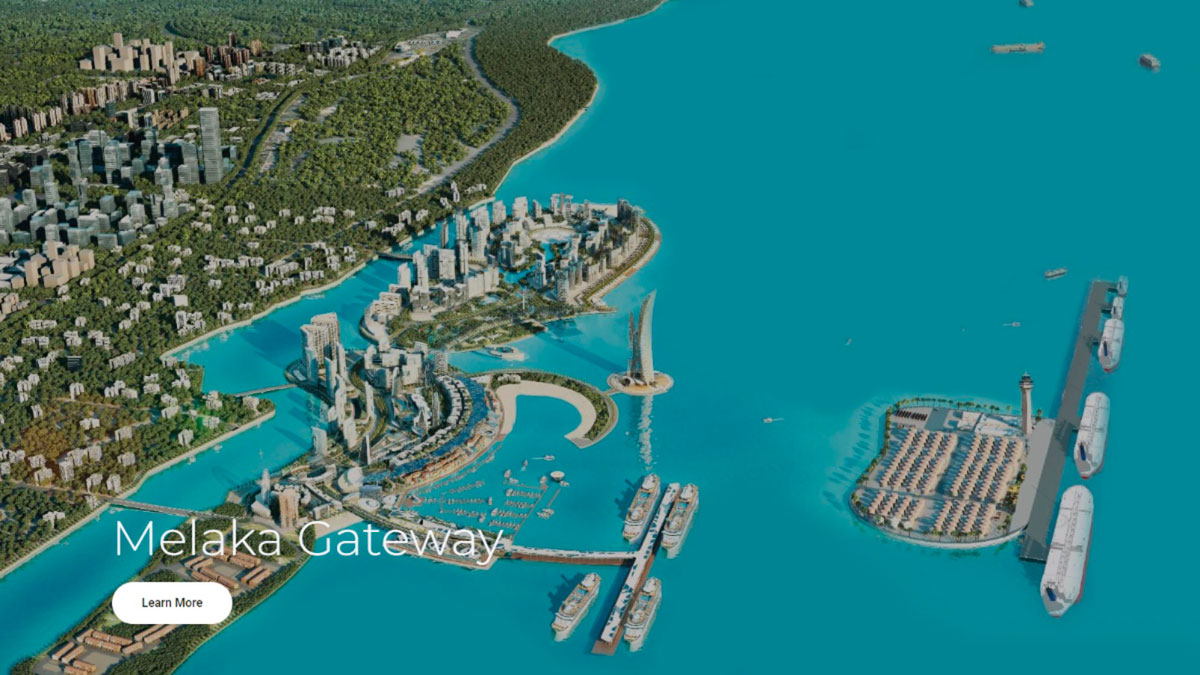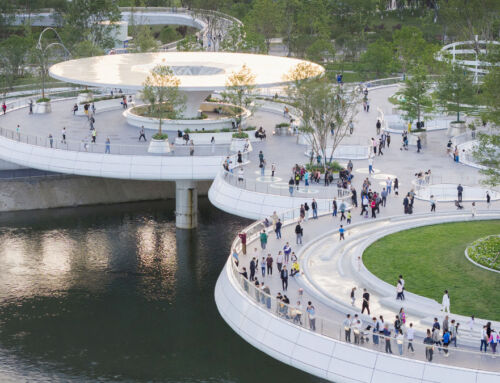Major urban and tourism developments have been associated almost exclusively in recent decades with the Middle East, with the skyscrapers and artificial islands of Dubai, or the vast projects in the desert or on the Red Sea coast of Saudi Arabia. However, in Southeast Asia, Malaysia joined the race for international tourism a decade ago—among other things—with a project that, although largely overlooked, seeks to transform both the landscape and the economy of one of its regions: the Melaka Gateway. Promising to transform the historic state of Malacca into a hub for trade, tourism, and luxury—UNESCO declared its capital a World Heritage Site in 2008—then Prime Minister Najib Razak broke ground on the project on February 7, 2014.
Located on the Strait of Malacca, on Malaysia’s southern coast, midway between Kuala Lumpur and Singapore, and overlooking one of the world’s busiest shipping lanes, Melaka Gateway integrates multiple facets. These include a cruise port to rival Singapore’s, a mixed luxury residential and commercial development, shopping malls, a free trade zone, an industrial zone, a marina, theme parks celebrating Malacca’s rich multicultural heritage, and other leisure and tourism facilities.
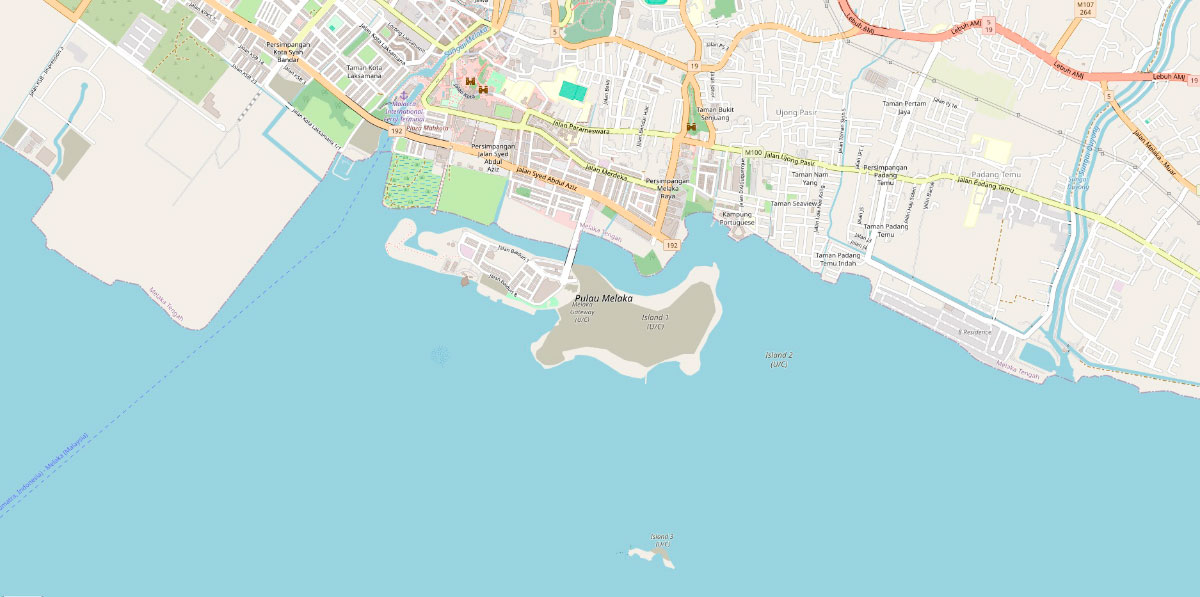
The Malacca-based developer KAJ Development, the project owner and main driving force behind Melaka Gateway, initially planned the development on a total area of 650 hectares, partly spread across four islands, with an estimated investment of approximately €8 billion. According to The Sun in 2014, KAJ Development had attracted five main investors at the time: Kasen International (China), TRE Development Pte Ltd. (Singapore), Skyye Group Pte Ltd. (Italy), Royal Caribbean Cruise (United States), and Rinani International Aero Marine (South Korea). And in May 2017, this time according to BRI MONITOR, KAJ Development signed an agreement to develop three of the islands with Chinese state-owned companies (PowerChina International Group Ltd., Shenzhen Yantian Port Group, and Rizhao Port Group), and the fourth with the participation of the Guangdong provincial government.
Various reports—from Forbes and The New York Times, for example—reported the People’s Republic of China’s interest in the urban development of Malacca Gateway. With the planned large deepwater port, the urban plan would be part of the initiative that the Asian country has been promoting since 2013, known as the “Belt and Road“. The idea of the Belt and Road Initiative is the development of infrastructure to create a global trade route, based on free trade between nations and through international cooperation.
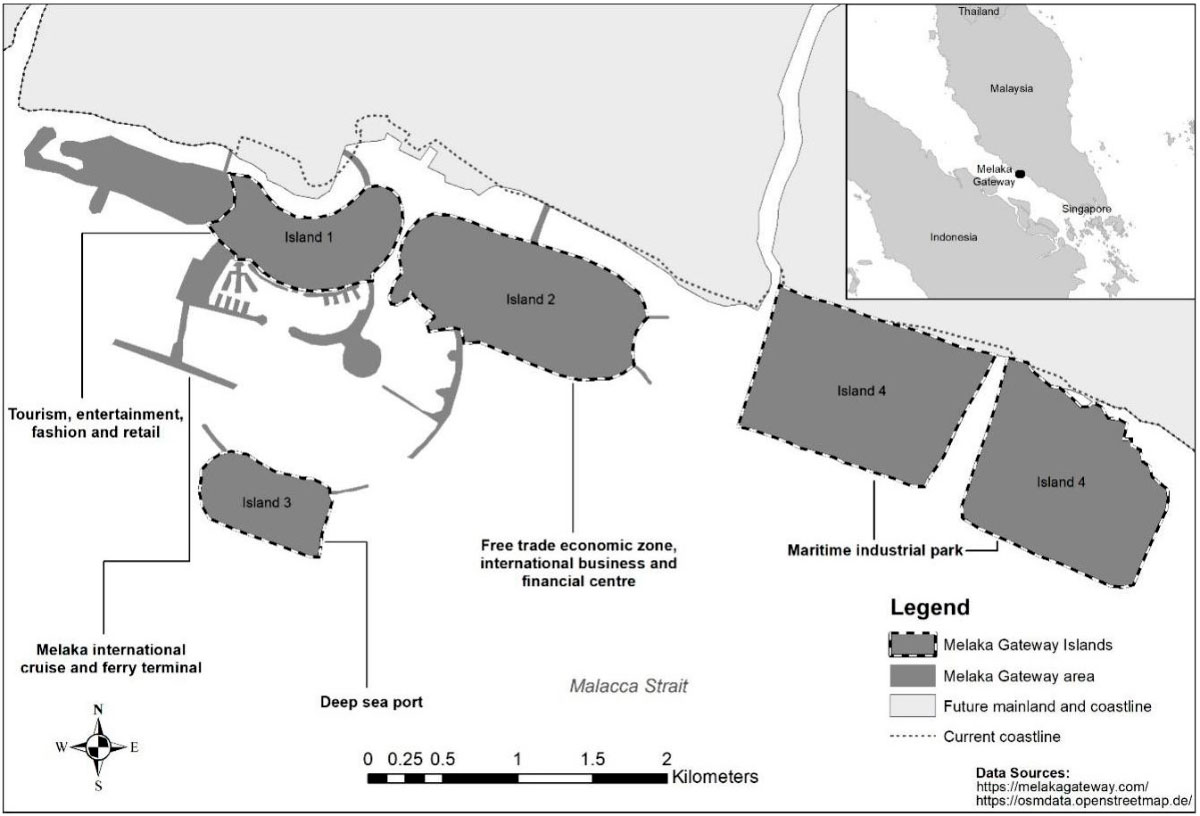
However, as is often the case with megaprojects, not everything was a bed of roses for this one. In 2020, the Malaysian government cancelled the project, presumably due to delays in its implementation and other “technical issues”—of which nothing else is known. The cancellation of the license represented a blow that raised doubts about its viability. However, in March 2022, not without prior legal disputes initiated by the developer, the project was returned to the company and restarted. A year later, in March 2023, several media outlets announced that KAJ Development had signed a cooperation agreement with the Dubai Integrated Economic Zones Authority, as an investor in Malacca Gateway.
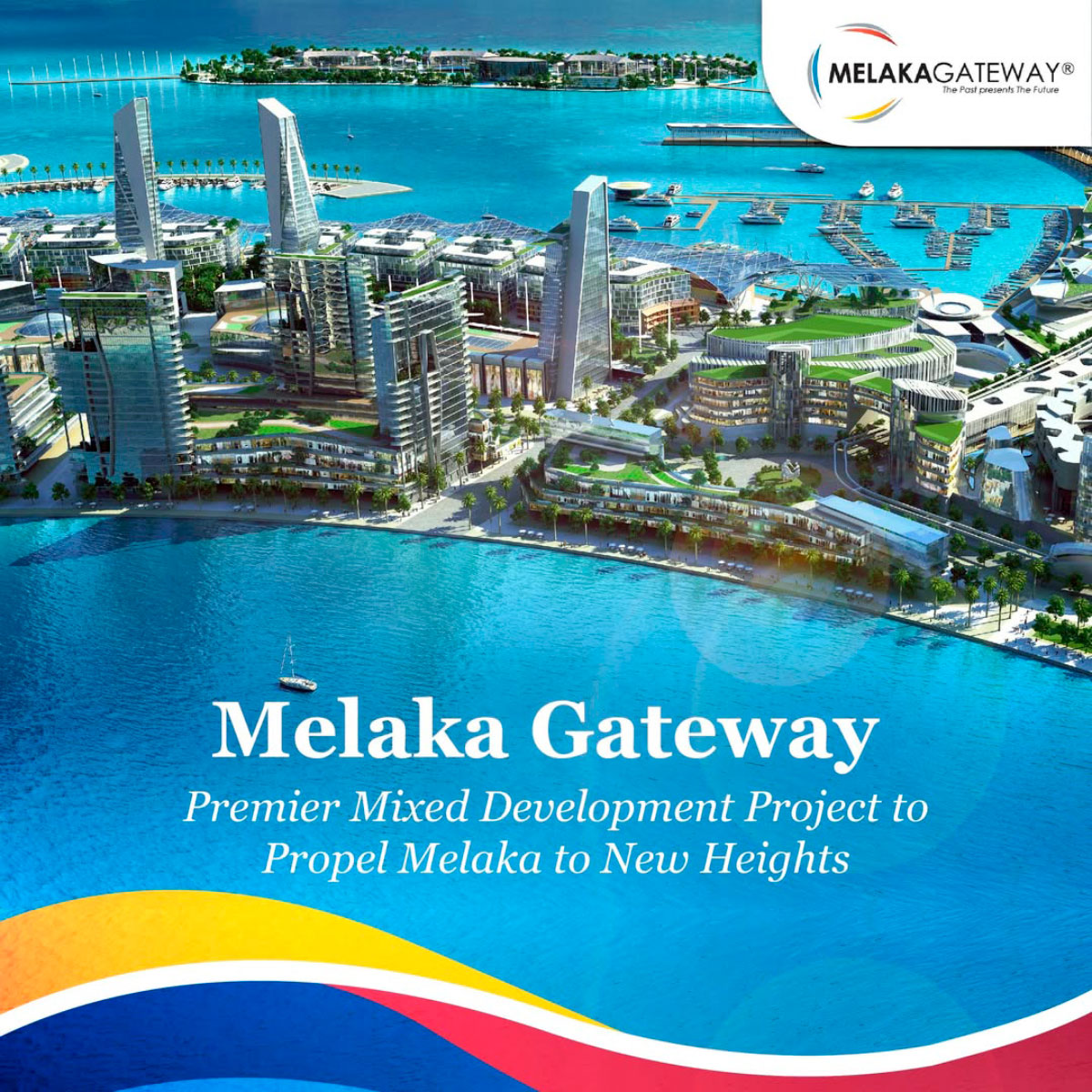
According to The Star, the cruise terminal and the first of the planned theme parks will be completed in 2026. However, the full implementation of the project will likely take many more years. Its success will depend on multiple factors, from the ability to attract international cruise ships to the ability to adapt and engage with Malacca’s cultural tradition. For now, Malacca remains a fascinating destination that attracts tourists and travelers for its history, its cuisine, and its blend of Malay, Chinese, and Portuguese, Dutch, and British colonial influences.
Sources: Melaka Gateway, Wikipedia, BRI MONITOR, The Sun, Forbes, New York Times, Malaysia Kini, Business Times, The Star.
Images: OpenStreetMap, Hutchinson and Tham, Melaka Gateway.


